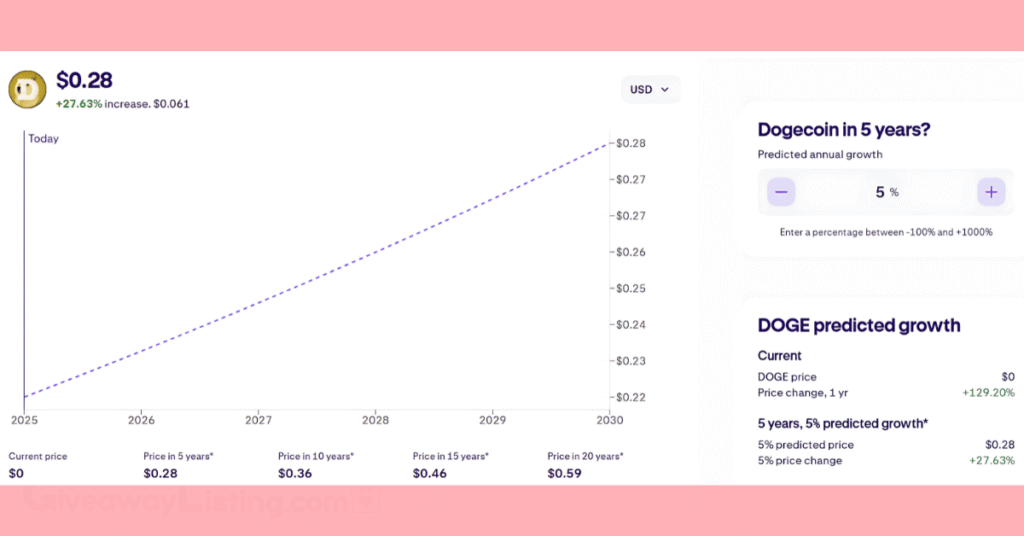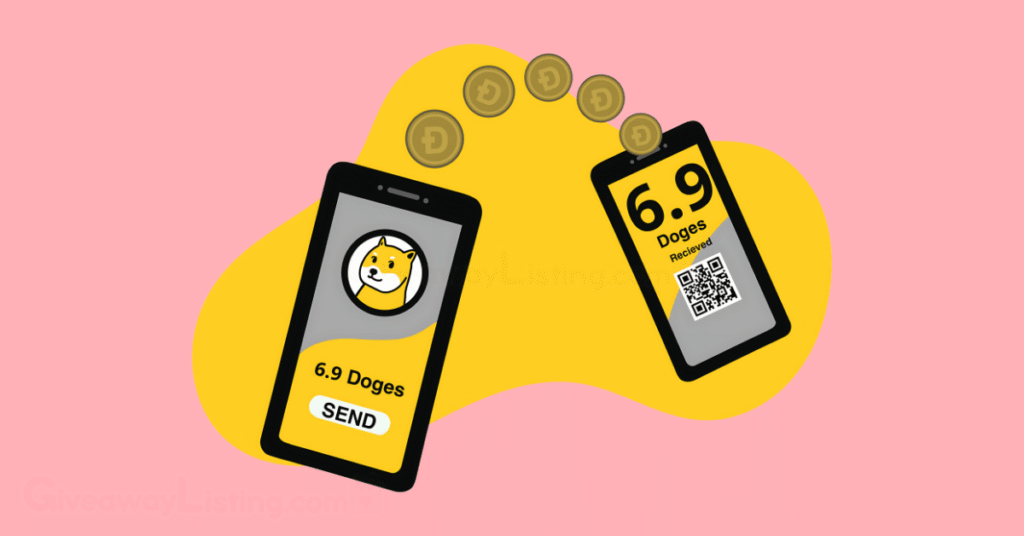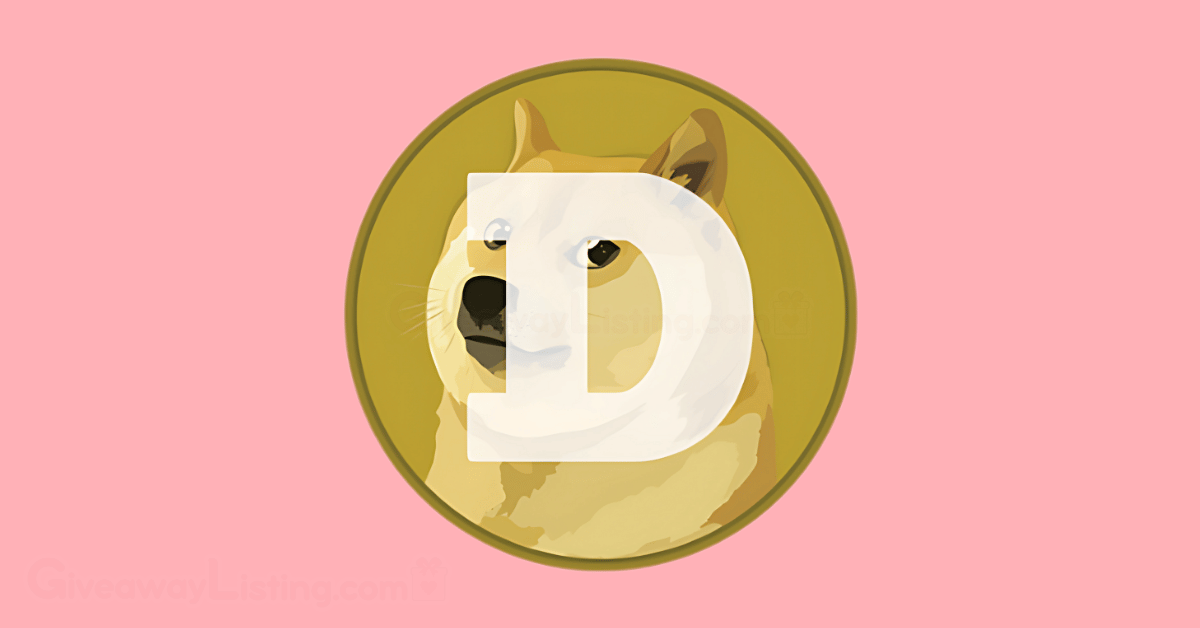What is Dogecoin? DOGE Explained – December 2025
Dogecoin is the original meme coin, a digital currency that started as a joke but has since become a fixture in the world of crypto. It’s an open-source, peer-to-peer cryptocurrency, meaning it allows for direct transactions between users without a central authority like a bank.
The story began in December 2013, when software engineers Billy Markus and Jackson Palmer created Dogecoin (DOGE) as a lighthearted jab at the serious tone of the crypto market. They took the famous “Doge” internet meme, featuring a Shiba Inu dog, and turned it into the face of their new coin. The goal was to create something fun and friendly that could reach a broader audience than Bitcoin.
Primarily, Dogecoin is used for tipping content creators on social media platforms like Reddit and Twitter as a way to say thanks. Thanks to its fast transaction times and very low fees, it’s also great for small, everyday payments. Beyond tipping, the Dogecoin community is famous for its charitable efforts, funding everything from clean water projects to sending the Jamaican bobsled team to the Winter Olympics.
Its journey from a meme to a top-tier asset with a passionate global following makes it a truly one-of-a-kind digital currency.
Why is Dogecoin Unique? DOGE Features

Let’s look at some of Dogecoin’s unique features. While it shares some DNA with other digital currencies, DOGE has a few characteristics that make it stand out from the pack.
| Feature | Dogecoin (DOGE) | Bitcoin (BTC) | Litecoin (LTC) |
|---|---|---|---|
| Creation Purpose | Joke/Meme Currency | Digital Gold | Payments |
| Coin Supply | Unlimited | Capped at 21 Million | Capped at 84 Million |
| New Coins | 10,000 per minute | Halves approx. every 4 years | Halves approx. every 4 years |
| Consensus | Proof-of-Work | Proof-of-Work | Proof-of-Work |
| Block Time | 1 minute | 10 minutes | 2.5 minutes |
| Typical Use | Tipping & Small Payments | Store of Value | Payments |
What truly sets Dogecoin apart is its origin story and culture. It was never intended to be a serious investment. Its creation as a joke is fundamental to its identity and has attracted a massive, active, and friendly community.
The community’s motto, “Do Only Good Everyday,” is more than just a tagline; it’s a principle that has fueled numerous charitable campaigns. Unlike cryptocurrencies built on complex technological promises, Dogecoin’s appeal is rooted in its simplicity, humor, and collective spirit. This community-first approach, combined with its inflationary nature of adding 5 billion new coins each year, means it’s designed to be spent and shared, not just held as a speculative asset.
Dogecoin History, Facts, and Statistics

Dogecoin holds a special place in the crypto world. It’s the project that proved a digital currency doesn’t need a stuffy whitepaper or a world-changing mission to capture global attention. Instead, it showed that a good meme and a strong community can be just as powerful. From its creation as a joke, DOGE has become a top-ranked cryptocurrency, proving that fun and finance can sometimes mix.
Its history is a wild ride, marked by viral moments, celebrity shout-outs, and incredible price swings. Unlike many crypto projects that are all business, Dogecoin has always been about its community, known for its lightheartedness and generosity. This unique identity has helped it survive and stay relevant in a market where thousands of other coins have disappeared.
This blend of meme culture and real-world application makes Dogecoin a fascinating case study. It operates on its blockchain, processes transactions quickly and cheaply, and is backed by a non-profit foundation dedicated to its development.
The History of Dogecoin
Dogecoin began in December 2013, created by software engineers Billy Markus and Jackson Palmer. They saw the crypto space becoming overly serious and full of questionable projects. Their idea was simple: create a fun and friendly digital currency that was more approachable than Bitcoin. For their mascot, they chose the face of the popular “Doge” meme, a Shiba Inu dog named Kabosu, which instantly gave the project a relatable and humorous identity.
Dogecoin wasn’t built entirely from scratch; it’s technically a fork of Litecoin, which itself is a fork of Bitcoin. This means it shares some core technology but with key differences. The official launch was on December 6, 2013, and its popularity exploded almost overnight. Within the first month, the official website had over a million visitors.
The founders, Markus and Palmer, stepped away from the project in 2014, leaving it in the hands of its community. Since then, a team of core developers has maintained the network. The Dogecoin Foundation, a non-profit organization, was also established in 2014 and was relaunched in 2021 with a renewed focus on supporting the coin through development, advocacy, and trademark protection.
Over the years, Dogecoin has gone from a niche internet joke to a major digital asset, largely thanks to its community and high-profile supporters.
Dogecoin Key Facts & Statistics
- Dogecoin was officially launched on December 6, 2013.
- It was created by software engineers Billy Markus and Jackson Palmer.
- The name and logo are based on the popular Doge internet meme featuring a Shiba Inu dog.
- Unlike Bitcoin, Dogecoin has no supply cap. Approximately 10,000 new DOGE are created every minute.
- A fixed amount of 5 billion new coins enters circulation every year.
- Transactions are confirmed much faster than on the Bitcoin network, with a block time of just one minute.
- Dogecoin reached its peak price of approximately $0.73 in May 2021.
- At its highest point, Dogecoin’s market capitalization exceeded $85 billion.
- Since 2014, Dogecoin has been “merge mined” with Litecoin, which allows miners to secure both networks at the same time.
- The community famously raised over $30,000 in DOGE in 2014 to send the Jamaican bobsled team to the Sochi Winter Olympics.
- The coin’s value has often been influenced by the tweets of Elon Musk, who has playfully called it “the people’s crypto.”
- A $258 billion lawsuit alleging Elon Musk ran a pyramid scheme with Dogecoin was dismissed in August 2024.
Dogecoin’s value is known to be highly reactive to market sentiment, news, and social media trends, making its price movements notoriously unpredictable.
DOGE Price Predictions: Is Dogecoin Going to Crash or Moon in 2025?

Digital currencies are known for their price swings, and Dogecoin is a prime example of this volatility. As a “meme coin,” its value is often tied more to social media hype and community sentiment than to technical fundamentals. This has led to some incredible price movements over the years. For a long time, DOGE traded for less than a penny, but in 2021, fueled by a perfect storm of retail investor interest and celebrity endorsements, its price soared to an all-time high of about $0.73.
This history of dramatic pumps followed by sharp corrections is typical for Dogecoin. Its price action is less of a steady climb and more of a rollercoaster ride, making predictions a tricky business. While some investors see its low price as an accessible entry point, others are cautious of its speculative nature.
Several key factors can influence whether Dogecoin’s price goes up or down. On the upside, the Elon Musk effect remains a powerful catalyst; a single tweet from the tech billionaire can still send the price climbing. Increased adoption by merchants who accept DOGE for payments also adds to its real-world utility.
Furthermore, the revitalized Dogecoin Foundation is actively working on projects like GigaWallet and Libdogecoin to make it easier for businesses and developers to use the network, which could build long-term value.
On the other hand, several factors could pull the price down. The coin’s value is also heavily dependent on continued hype. If the community’s attention shifts or a key influencer steps back, the price could fall just as quickly as it rose. Regulatory uncertainty in the crypto space also remains a significant risk.
Is DOGE Going to Crash or Moon in 2025?
Some chart watchers have noted that DOGE has broken out of long-term patterns that have historically led to major price increases. With the potential for a spot ETF approval on the horizon and continued development work from the foundation, many believe the groundwork is being laid for another significant run.
However, the bearish view cannot be ignored. The market’s reliance on hype makes Dogecoin vulnerable to sudden shifts in sentiment. Short-term algorithmic forecasts have predicted minor corrections, and the coin must hold key support levels to maintain its upward momentum. The constant flow of new coins into the market also means that demand must continuously increase to keep the price stable.
Ultimately, Dogecoin’s performance in 2025 will likely depend on a few key events. An ETF approval could be a game-changer, bringing a new level of legitimacy and capital. Continued mainstream adoption and successful project rollouts from the Dogecoin Foundation would also provide a strong boost. Without these catalysts, however, the coin could struggle against its inflationary tokenomics and the ever-present risk of fading hype.
For a more detailed analysis, this Dogecoin price prediction offers further insights into its potential for 2025.
Dogecoin Risks, Scams, and Hacks

Getting involved with Dogecoin can be an exciting experience, but it’s not without its pitfalls. The very things that make DOGE popular—its massive community and high visibility—also make it a prime target for bad actors. The digital currency world moves fast, and its decentralized nature means that once your coins are gone, they’re likely gone for good.
Beyond the normal investment risks, the Dogecoin ecosystem is filled with scams designed to trick people out of their money. These schemes often play on the coin’s fun-loving image or try to cash in on the buzz created by high-profile supporters. From fake giveaways to malicious impersonators, these traps are a constant threat to unprepared users.
Understanding these dangers is the first step toward protecting yourself. Knowing the difference between market volatility and an outright scam is critical. Anyone looking to buy, trade, or hold DOGE needs to be aware of the specific risks involved with the coin itself and the common tricks used by scammers to fool the community.
The Risks Associated With Dogecoin
One of the most significant risks tied to Dogecoin is its extreme volatility. The price of DOGE is heavily influenced by social media trends, celebrity endorsements, and general market sentiment rather than traditional financial metrics. This can lead to rapid price spikes, often called pumps, followed by equally sharp crashes. This hype-driven cycle makes it difficult to predict its value and can result in significant losses for those who buy in at the wrong time.
Another key risk is its economic model. Unlike Bitcoin, which has a finite supply, Dogecoin has an unlimited supply, with 5 billion new coins being created every year. This inflationary model was intended to encourage spending, but it also means there’s constant downward pressure on its price. Additionally, a large percentage of DOGE is held in a small number of wallets. While many of these are likely exchange wallets holding coins for millions of users, this concentration of wealth still creates the risk of price manipulation by a few large holders, or “whales.”
Here’s how you can manage some of these risks:
- Only Invest What You Can Afford to Lose: Given its volatility, you should never put more money into Dogecoin than you are prepared to lose completely.
- Do Your Own Research: Don’t rely on tweets or Reddit posts. Look into the project’s development, community activity, and real-world use cases before buying.
- Avoid FOMO (Fear of Missing Out): Chasing a massive price pump is a common way to lose money. Wait for the market to cool down and make decisions with a clear head.
- Diversify Your Portfolio: Don’t put all your eggs in one basket. Spreading your investments across different assets can help manage the risk of a single coin’s poor performance.
How to Avoid Dogecoin Scams and Hacks?
A few notable security incidents have marked Dogecoin’s history. In its early days, online wallet services like Dogewallet and Doge Vault were hacked, with millions of coins stolen. These events showed the dangers of leaving your crypto in the care of third-party services. More recently, scams have become more sophisticated, often playing on confusion or the promise of free money.
Some critics even label Dogecoin itself a scam, not because it’s designed to steal money, but because its value is seen as being built on hype rather than any meaningful technological innovation. One of Dogecoin’s creators, Jackson Palmer, has become a vocal critic of the crypto industry, calling it a “get rich quick” scheme. This perspective is fueled by the fact that Dogecoin’s price is so closely tied to social media buzz and celebrity influence, particularly from Elon Musk.
The most common scams today include fake giveaways on social media, where scammers impersonate celebrities like Elon Musk and promise to double any crypto you send them. There are also copycat tokens with similar names designed to trick buyers, and phishing emails that try to steal your wallet’s private keys. To steer clear of these traps, look out for the following red flags:
- Promises of Guaranteed Returns: If something sounds too good to be true, it almost certainly is. There are no “guaranteed” profits in crypto.
- Urgent Calls to Action: Scammers often create a sense of urgency, pressuring you to act fast before you have time to think.
- Impersonations: Always double-check the social media handles or email addresses of anyone claiming to be a celebrity or official representative. Look for minor typos or extra characters.
- Requests for Your Seed Phrase or Private Keys: Never share your wallet’s seed phrase or private keys with anyone. This is the master key to your funds.
- Suspicious Links: Avoid clicking on unfamiliar links or downloading attachments from unknown sources, as they could contain malware.
How to Secure Your Dogecoin?
Taking control of your own security is the best way to keep your DOGE safe. Instead of leaving your coins on an exchange, which is a common target for hackers, you should store them in a wallet where you control the private keys.
Follow these steps to secure your Dogecoin:
- Use a Non-Custodial Wallet: Choose a wallet where you—and only you—have access to the private keys.
- Get a Hardware Wallet: For the highest level of security, use a hardware wallet, also known as a cold wallet. These devices store your keys offline, making them immune to online hacking attempts.
- Back Up Your Seed Phrase: When you set up a non-custodial wallet, you’ll be given a 12 or 24-word seed phrase. Write this down on paper and store it in a safe, private place. Never store it as a digital file on your computer or phone.
- Use Strong, Unique Passwords: Protect your wallet software with a strong password that you don’t use for any other account.
- Beware of Public Wi-Fi: Avoid accessing your wallet or making transactions when connected to public Wi-Fi networks, as they can be insecure.
Ultimately, staying safe in the Dogecoin world requires a healthy dose of skepticism. Always get your news and updates from official Dogecoin channels, and be extremely cautious about which websites or applications you connect your wallet to.
Latest News on Dogecoin

Since its creation in 2013, Dogecoin has grown from a simple meme into a serious project with a dedicated development team and a clear plan for the future. The revitalized Dogecoin Foundation has laid out a “Trailmap” outlining several key projects aimed at making DOGE a more practical and widely used currency. These initiatives focus on enhancing the network’s core technology, facilitating easier acceptance of DOGE payments, and exploring new methods to enable transactions without internet access.
Here are some of the latest developments and upcoming events for Dogecoin:
- Libdogecoin & GigaWallet: These are two core projects aimed at making it much easier for developers and businesses to build products that support Dogecoin. GigaWallet, in particular, will provide a ready-made solution for platforms like online stores and exchanges to accept DOGE payments.
- Potential Move to Proof of Stake (PoS): The Dogecoin Foundation has proposed working with Ethereum co-founder Vitalik Buterin to develop a community staking version of PoS. This would make the network more energy-efficient and offer a new way for users to earn rewards.
- RadioDoge & Starlink: This initiative is exploring the use of radio technology combined with SpaceX’s Starlink satellite network to enable DOGE transactions in remote areas without reliable internet access.
- Spot Dogecoin ETF Filings: Major financial firms like 21Shares have filed applications with the SEC to create a spot Dogecoin ETF. If approved, this would allow people to invest in DOGE through traditional brokerage accounts, potentially bringing a massive amount of new investment into the market.
- Project Sakura: This is an ambitious plan to improve Dogecoin’s scalability, with the goal of increasing the network’s block speed and size tenfold to handle many more transactions.
To stay informed with the most accurate information, you should always follow the official Dogecoin channels. There is a lot of noise and misinformation out there, so getting your facts straight from the source is key. You can also find more breaking stories in our dedicated Dogecoin news section, which offers a closer look at the latest DOGE developments.
Here are the official sources for Dogecoin news:
- Official Website: dogecoin.com
- Dogecoin Foundation: foundation.dogecoin.com
- X (Twitter): @dogecoin
- Reddit: r/dogecoin
How to Get Started with Dogecoin?

One of the best things about Dogecoin is how easy it is to get started. You don’t need to be a tech wizard or a financial guru to buy your first coins. The community has always valued being friendly and accessible, and that extends to the process of acquiring DOGE.
Here’s a simple step-by-step guide to get you started:
- Choose a Wallet: Before you buy any DOGE, you need a place to store it. You have two main options: a software wallet or a hardware wallet. For maximum security, a hardware wallet is a top choice because it keeps your coins offline. If you’re starting with a small amount, a reputable software wallet can be very convenient.
- Pick a Crypto Exchange: A cryptocurrency exchange is an online marketplace where you can buy, sell, and trade digital currencies. Many major exchanges like Coinbase, Kraken, and Binance list Dogecoin. When choosing an exchange, look for one that is available in your country, has a good reputation, and offers strong security features.
- Buy Your DOGE: After setting up and verifying your account on an exchange, you can fund it with traditional currencies like US Dollars or Euros. From there, you can place an order to buy Dogecoin. You can start with any amount you’re comfortable with; you don’t have to buy a whole coin.
- Secure Your Coins: After buying your DOGE, the safest move is to transfer it from the exchange to the personal wallet you set up in step one. This gives you full control over your funds and protects them from exchange-specific risks like hacks.
This guide has walked you through the world of Dogecoin, from its meme-filled origins to its status as a major digital currency. We’ve covered its unique features, price history, and the importance of staying safe from risks and scams.
Remember, Dogecoin is a volatile asset, and its value can change dramatically in a short amount of time. Always do your own research, be security-conscious, and never invest more than you are willing to lose.
The information in this guide is current as of December 2025.
What is Dogecoin? FAQs
Here are answers to some frequently asked questions about Dogecoin.
What is Dogecoin Being Used For?
Dogecoin is mainly used for tipping content creators on platforms like Reddit and as a fast, cheap way to send money. A growing list of merchants, including Tesla and AMC Theaters, accept it for payments. Its community also famously uses it for charitable fundraising.
Is Doge a Good Investment?
Investing in DOGE is highly speculative, as its price is driven by social media hype more than anything else. While it has a massive community and high-profile supporters, its unlimited supply makes it inflationary. It’s a high-risk asset best suited for those with a high tolerance for volatility.
How Much is $500 Worth of Dogecoin Right Now?
The exact amount of DOGE you can get for $500 changes constantly with the market price. As of early December 2025, with the price around $0.21 per coin, $500 would get you approximately 2,380 DOGE. This figure fluctuates minute by minute due to the coin’s volatility.
Does Dogecoin Have a Future?
Dogecoin’s future depends on growing its real-world use beyond its meme status. The Dogecoin Foundation is working on technical upgrades to lower fees and improve speed. With a passionate community and increasing merchant adoption, it has a chance to remain a popular digital currency for everyday transactions.
Can You Convert Dogecoin to Cash?
Yes, you can easily convert DOGE to cash through any major cryptocurrency exchange like Kraken or Binance. You simply sell your Dogecoin on the platform for a traditional currency like USD or EUR. Afterward, you can withdraw the funds directly to your bank account.
Can You Use Doge to Buy Anything?
You can use DOGE to buy a surprising variety of things, from movie tickets to electric cars. Many online retailers accept it through payment processors. You can also use Dogecoin to purchase gift cards for major stores like Amazon and Home Depot.

